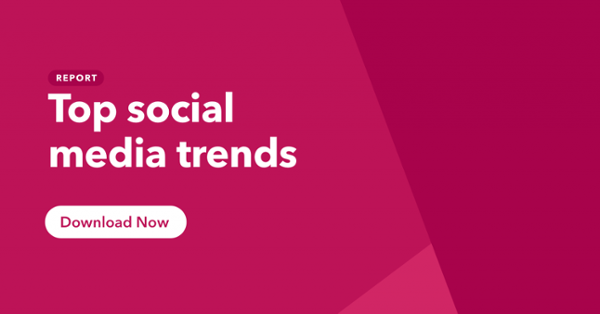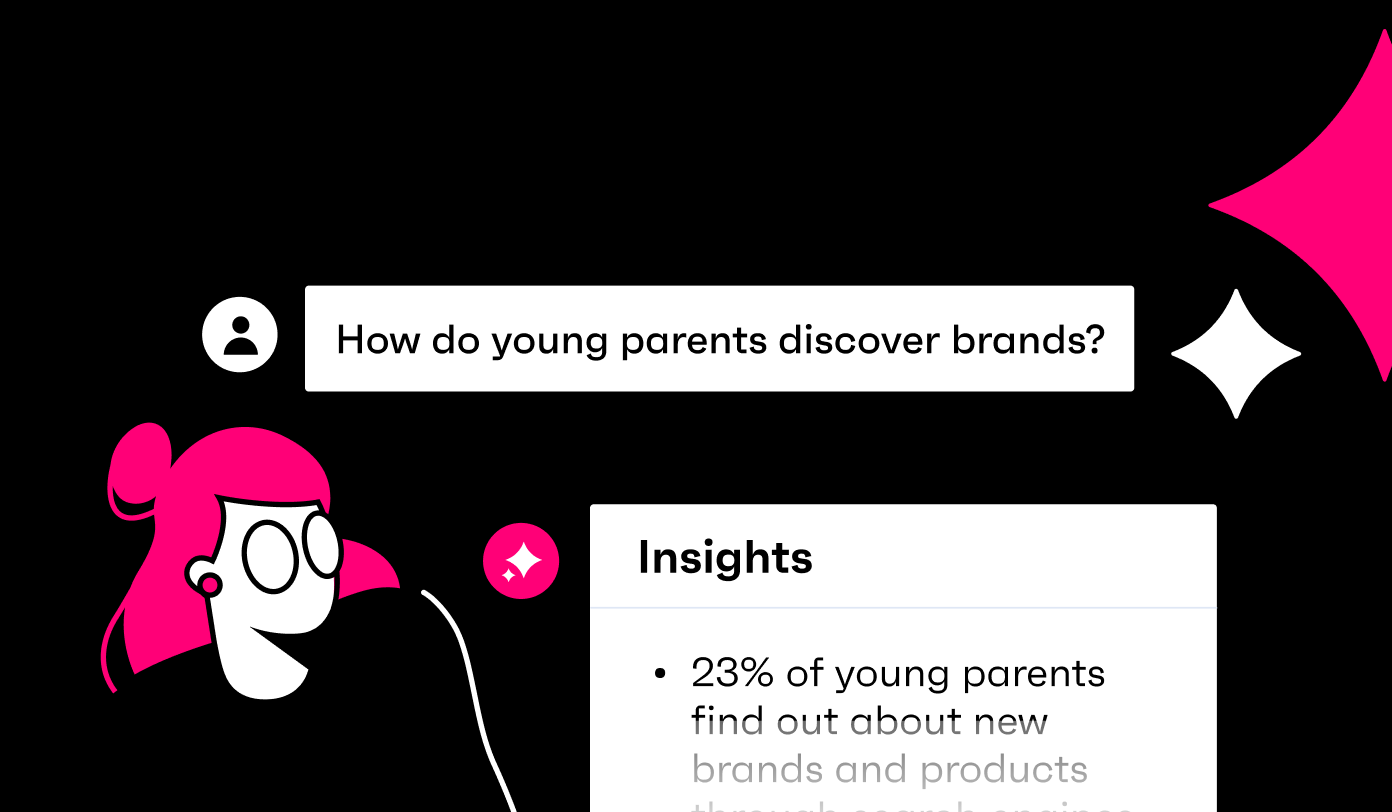The social media industry has faced a bit of a reckoning over the past few years.
Scrutinized over its addictiveness, its impact on youth, its lack of content moderation and its response to the circulation of misinformation, some consumers are now questioning the role social media plays in their lives.
Social media being put under a microscope has, in turn, contributed to the emergence of new digital wellbeing tools.
These apps or functions focus on helping individuals be mindful of how they use the tech around them while providing tips and techniques for establishing healthy habits.

Google’s research demonstrated that 78% of people felt happier about their phone usage, since using their digital wellbeing app. What’s more, screen time trackers reported finding more time to meditate and improved sleep quality.
But how is the average internet user changing their social media habits, if at all? Here are 4 key insights from our latest flagship report on the social media landscape.
1. Time spent on social keeps leveling out.
Globally, digital consumers are now spending an average of 2 hours and 23 minutes per day on social networks and messaging.
A look at the trended data here suggests we might be approaching saturation in social media consumption.
Throughout 2018, we started to see time spent on social media plateau across a handful of countries – where time spent online has either stayed the same or decreased.
This is likely a result of many internet users having a better awareness of the time they spend looking at screens, coupled with the perceived negative effects associated with social media usage, with people seeking a digital detox as a result.
This trend has continued. In early 2019, time spent on social media either decreased or stayed the same, compared to 2018 data, in 20 out of the 45 markets we survey.
If we examine the habits of 16-24s in isolation, we see many mature markets posting much higher figures compared to their older counterparts. This age group in the UK, Romania, Portugal, and Ireland are spending well over 3 hours on social media daily.
But, the effects aren’t down to age alone.
Even among 16-24s, certain markets – primarily in Asia and Latin America – stand out for their love of social media. Particularly notable are Argentina (4:17), the Philippines (4:16) and Colombia (4:12).
2. Consumers turn to ‘dark’ behavior.
Coined in 2012, “Dark Social” refers to nearly untraceable web traffic that comes from internet users sharing content directly and privately with each other, instead of posting or sharing it publicly.
It usually takes place on private messaging apps and email, and it means that many brands may be overlooking a huge portion of social sharing about their products.
Therefore,
Dark social has since emerged as a major marketing channel brands can’t ignore.
In fact, our research in the UK and U.S. shows that internet users in these markets are more likely to be sharing content and information on private messaging apps than on public social media platforms.

It’s been well over a decade since Facebook took the mantle from Myspace as the top social platform on a global level. In that time, how and why people use social media has drastically changed.
The friend networks people may have been accrued on Facebook during that time will typically be very large, and at times, very impersonal, prompting users to question if they’re comfortable sharing their posts and updates which such a vast group of people.
As a result, digital consumers are now more likely to say they use social to follow the news (40%) than they are to identify it as a platform for keeping in touch with friends (39%).
Entertainment also now plays a key role in motivating digital consumers to engage with social media, ranking as the third most important reason for internet users (38%), but showing the highest growth.
The opportunities for social engagement, at all times of the day and in various locations, have facilitated the evolution of social platforms into entertainment hubs.
It’s no longer about “social” activities in the purest sense, but more purposeful activities- in particular, those based around content consumption.
The appetite for entertainment has accounted for YouTube rising to top position for monthly visits.
It’s the only major social has more visitors than members, revealing that a significant number of their visitors haven’t logged into their accounts, or aren’t members in the first place.
3. The messaging question.
As consumers are increasingly likely to share content with friends privately, it’s a fruitful time for messaging services.
And globally it’s a close race between Facebook Messenger and WhatsApp.
While Facebook Messenger has a 6 percentage-point lead in membership rates over WhatsApp, the latter has more monthly users.
Both have grown in popularity over the past few years. Since the beginning of 2016, Facebook Messenger has seen a 13% increase in visitation rates outside China, while WhatsApp has seen an impressive 30% increase in the same timeframe.
WhatsApp generally outperforms Facebook Messenger across world regions and age groups, and currently enjoys a 13 percentage-point lead over Facebook Messenger outside of China, judging by users who use the services at least daily.
The only region where WhatsApp doesn’t post higher figures than Facebook Messenger is in North America, where only 9% of people use WhatsApp on a daily basis compared to 31% who use Messenger.
Instagram also boasts high monthly visitation figures, rising to 75% among 16-24s.
Instagram’s direct messaging tool could be a key reason for this; globally, 15% say they have used Instagram direct messaging to send a photo or message to a friend on a 1-to-1 basis, rising to 27% among 16-24s.
Having control over how long their posts are seen for, and being able to share posts with certain people, is attractive to young consumers who don’t necessarily want opinions and pictures to remain online forever.
This could be the reason behind Instagram rolling out a ‘Close Friends’ feature on Instagram stories, where users can choose share their stories only with a personalized set of friends.
The new feature is invariably a way to cater towards Gen Z’s need for autonomy and sense of privacy, and is representative of a wider shift in the industry towards greater user discreteness and control.
4. Virtual hangout spaces are on the rise.
60% of internet users outside China have watched a video on Facebook, Twitter, Snapchat or Instagram in the past month.
Whenever mobile video is discussed – particularly for younger age groups – it’s almost always in the context of entertainment.
Watching videos on mobile rose sharply last year, but, there’s another type of video on the rise.
Video calling is often talked about from a business perspective, like using software to keep in touch with remote colleagues.
But in 2018:
Video calling increased for all nearly all demographics, including students as well as professionals.
All age groups are increasing their number of video calls, but Gen Z are the demographic to watch, as they have high potential to shape how the trend develops going into 2020.
Social services like Houseparty and Squad revolve around video calling, allowing friends to hang out when they’re not physically close.
They point towards a possible new frontier in social media, where entertainment and communication are more closely interlinked in virtual hangout spaces, especially given that Epic Games – owner of Fortnite –acquired Houseparty this month.
A recent survey found that half of teens say playing Fortnite helps them keep up their friends and learn teamwork, with 40% stating they had improved their communication skills. The idea that Fortnite could become a new type of social network is one to keep an eye on.





.webp?width=495&height=317&name=pink_thumb_graphs%20(1).webp)
.webp?width=495&height=317&name=pink_thumb_letter%20(2).webp)
